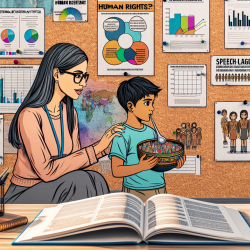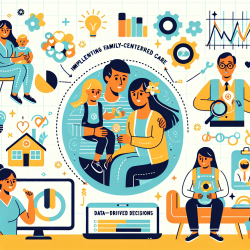Introduction
In the realm of speech-language pathology and online therapy services, the importance of data-driven decisions and evidence-based practices cannot be overstated. While the focus is often on individual therapy techniques, there is much to learn from public health initiatives that have successfully tackled complex health challenges. One such example is the historical battle against schistosomiasis in Japan, which offers valuable insights into the integration of environmental and cultural changes to improve health outcomes. This blog explores how these lessons can be applied to enhance therapeutic practices for children.
The Historical Context of Schistosomiasis in Japan
Schistosomiasis, a disease caused by parasitic flatworms, was once endemic in Japan, particularly in the Yamanashi Prefecture. The disease's lifecycle relied heavily on the Miya’iri snail as an intermediary host, thriving in flooded rice paddies and irrigation ditches. The Japanese government's response to this public health crisis was a comprehensive approach termed "total prevention," which involved environmental engineering, cultural reform, and public health education.
Key Strategies for Total Prevention
The Japanese approach to eradicating schistosomiasis was multifaceted, involving:
- Environmental Engineering: Concrete irrigation ditches were constructed to disrupt snail habitats, and rice paddies were converted into fruit orchards to reduce waterlogged areas.
- Cultural Reform: Public health campaigns focused on changing toileting practices and improving hygiene consciousness among rural populations.
- Education and Mobilization: Mass media campaigns and school education programs were implemented to raise awareness and promote preventive measures.
Applying Lessons to Modern Therapy Practices
The success of Japan's total prevention strategy offers several lessons for enhancing therapy practices, particularly in online therapy settings:
- Environmental Adaptation: Just as environmental changes were crucial in eradicating schistosomiasis, adapting the therapeutic environment can significantly impact therapy outcomes. This could involve creating a conducive online learning environment that minimizes distractions and promotes engagement.
- Cultural Sensitivity: Understanding and integrating cultural contexts into therapy practices can enhance their effectiveness. This might involve tailoring therapy approaches to align with the cultural values and practices of the children and families served.
- Community Engagement: Engaging families and communities in the therapeutic process can lead to more sustainable outcomes. Encouraging parents and caregivers to participate in therapy sessions and reinforcing therapeutic activities at home can mirror the community mobilization seen in Japan's public health campaigns.
Encouraging Further Research
While the historical case of schistosomiasis in Japan provides a compelling example of successful public health intervention, it also highlights the need for ongoing research and innovation in therapy practices. By exploring how environmental and cultural factors influence therapy outcomes, practitioners can develop more effective and personalized interventions for children.
To read the original research paper, please follow this link: Total prevention: a history of schistosomiasis in Japan.










